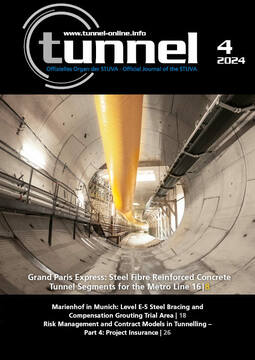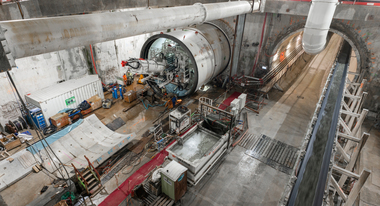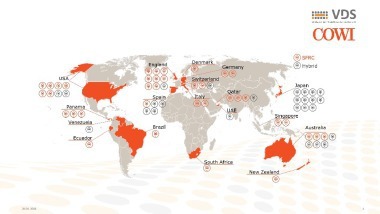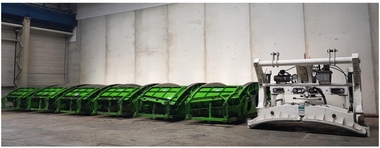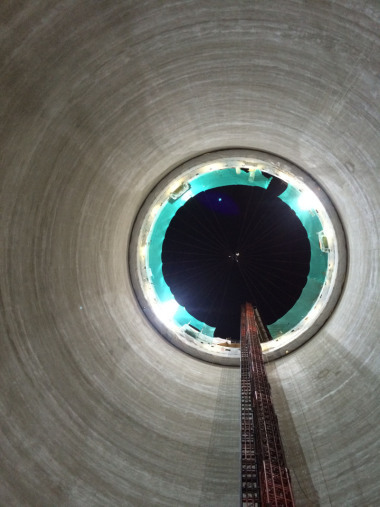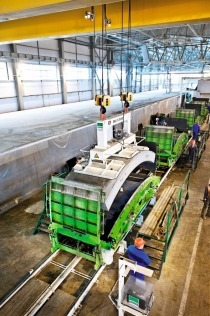Grand Paris Express: Steel Fibre Reinforced Concrete Tunnel Segments for the Metro Line 16
The 2024 Olympic Games in Paris also drew the world‘s attention to Saint Denis and Le Bourget, where the Olympic Village and the Press Village were set up. Saint Denis and Le Bourget are both part of the “Métropole du Grand Paris” community, and both have a station for metro line 16 of the Grand Paris Express. Lot 1 of Line 16 includes a French premiere: segments made of steel-fibre-reinforced concrete (SFRC) were used here for the first time over a length of 12 km. This will undoubtedly have an impact across Europe in terms of using SFRC technology for tunnel segments, and it may already be the case, given the many projects that are emerging.
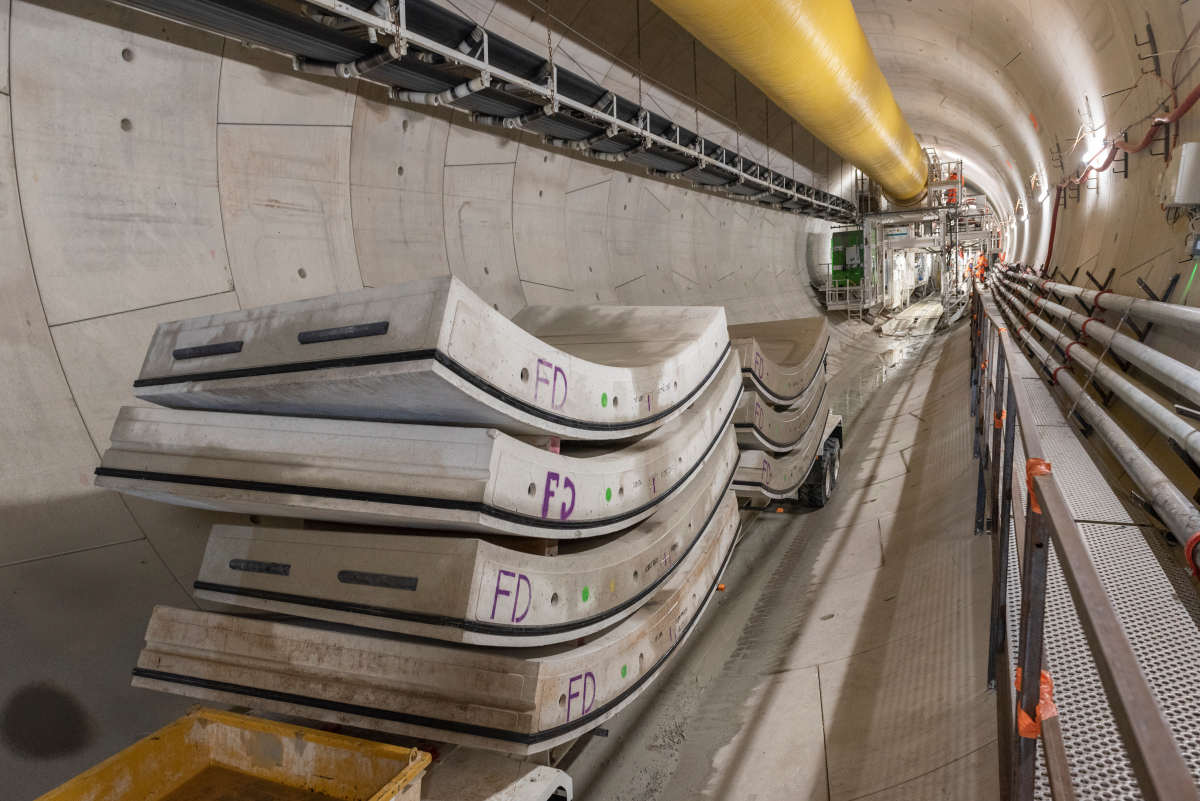 For construction lot 1 of the Grand Paris Express Line 16, steel fibre-reinforced concrete segments were used for the first time in a French metro project
For construction lot 1 of the Grand Paris Express Line 16, steel fibre-reinforced concrete segments were used for the first time in a French metro project
Credit/Quelle: Eiffage Génie Civil
Introduction
This ambitious project to install 10 000 permanent SFRC rings over a 19.8 km stretch, in three different diameters (6700/7400, 7750/8550 and 8700/9500 mm) faced three major challenges from the outset.
The project owners had to accept a financial disadvantage, which meant that the original expectations that had motivated their interest were not met.
The situation in France differs from that in Anglo-Saxon or international markets, where there is a strong leverage effect between the price of the fibre and that of the reinforcement. In France, the ratio between the two raw materials is one to one, and the loss in value results solely from the different ratios.
This situation has led us to focus our considerations on sustainability and low carbon emissions. These have now become the most attractive aspect of using SFRC in tunnel construction and are at the heart of our communications work.
Our concept goes beyond pure financial logic: SFRC in tunnelling is both good for the environment and safe for the people who use the tunnels every day. The use of technology and engineering science in the service of the general public combined with economic efficiency is a win-win situation.
There was strong resistance from the industry, in particular project owners and project managers, due to concerns about the provisional phases, form removal, segment handling and the behaviour of the ring given the thrust of the TBM‘s cylinders.
These obstacles lead to a multiplication of safety coefficients and safety approaches, from modelling and calculations to implementation in the prefabrication workshop and monitoring of the inspection plan.
General staff have to be trained in the workshop, which is both a risk and an opportunity for quality prefabrication; installations are completed using staff who also often have to be trained, and who may initially consider the installation of SFRC segments to be restrictive compared to that of reinforced concrete segments.
Production in precast plants was a step forward for SFRC, but installation in tunnels did not offer comparable advantages at first glance. Added to this were the constraints of strict standards, a rather skeptical profession and a client who initially focused predominantly on economic aspects. Overcoming these constraints makes it possible to focus on the development of steel fibre-reinforced concrete in Europe and to pursue prospects for the future that go beyond the market of tunnel segments.
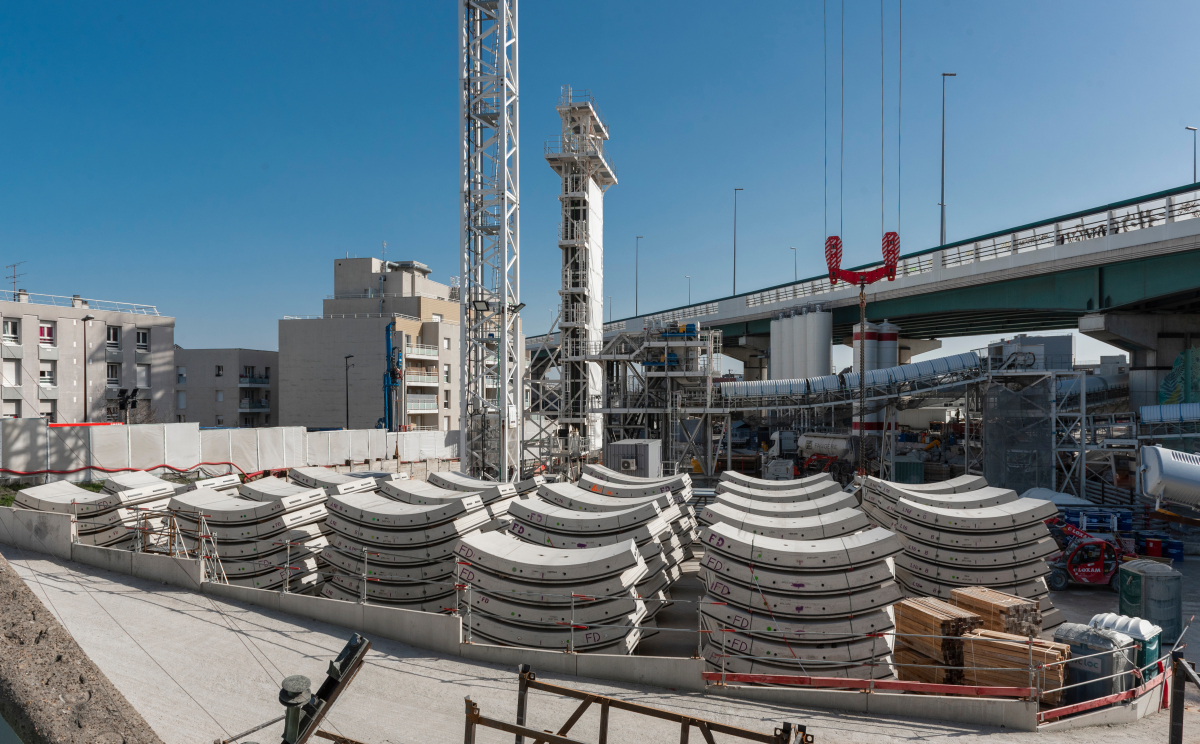 A total of 6000 SFRC segment rings were installed over a distance of 12 km
A total of 6000 SFRC segment rings were installed over a distance of 12 km
Credit/Quelle: Eiffage Génie Civil
In the case of lot 16-1, we were able to take advantage of the fact that we had a basic contract for reinforced concrete segments, and to involve the primary contractor in the role of partner, rather than overseeing SFRC. this was accomplished by establishing a relationship of trust, which enabled all the stakeholders involved to see our results and the progress we were able to make in validating, implementing, inspecting and installing SFRC segments. In the end, 6000 rings with a diameter of 8700/9500mm were installed in over 12 km of tunnel.
In this article we will focus on aspects that we hope will give the reader a better understanding of the challenges involved in establishing the use of SFRC segments in tunnel construction.
1 Regulatory Process
In this section, we would like to highlight four points:
1. A feasibility and validation campaign takes a minimum of eight months, with fire tests alone requiring three months. It took us 1 year to get the first SFRC segments out of the production workshop.
2. The calculation cost is more or less the same as that of calculating and drawing up reinforced concrete plans, provided that you do not have to take a 3D approach, which alone can add three months to the lead time.
3. Validation of the formula, which includes formula definition, design tests, suitability tests, fire tests and tests specific to SFRC, including in particular level 1 tests, especially determining the homogeneity coefficient K (with the objective of K=1), may influence how these SFRC solutions are implemented. This cost appears to be identical from one European country to another.
4. We will return later to technical aspects, and in particular the obstacle to developing fibre-reinforced solutions created by compliance with orientation coefficient K, especially the acceptability criterion K=1, since the FIB (Fédération internationale du béton) has just confirmed that K=1 for SFRC intrinsically, given its isotropy.
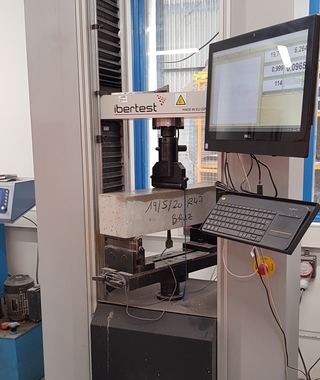 Testing concrete prisms required investment in a press and eight working hours for a series of ten test specimens
Testing concrete prisms required investment in a press and eight working hours for a series of ten test specimens
Credit/Quelle: Bekaert
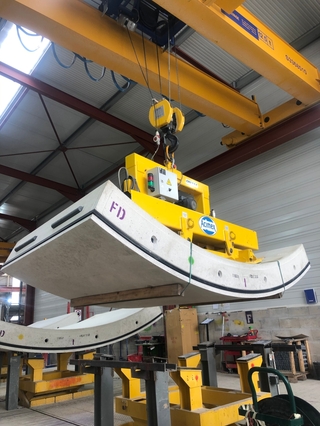 The fabrication and installation of SFRC segments are part of an effective process chain in which the rules of the trade are adhered to
The fabrication and installation of SFRC segments are part of an effective process chain in which the rules of the trade are adhered to
Credit/Quelle: Eiffage Génie Civil
2 Quality Plan
The quality plan is often unnecessarily ambitious. Testing on 15*15*60cm prisms requires investment in a press and eight hours of technician time for a series of ten test specimens, even though this test is not representative of the size of a 60 mm fibre (5*60 mm specimen = 300 mm cross-section*4 = 1200 mm) and creates a dispersion that is difficult to analyse.
Checking the isotropy of fibre orientation by taking samples from a segment cannot give conclusive results, given how unrepresentative the samples taken are. These tests are included in the suitability test, even though they are carried out as part of the level 1 tests.
Given the lack of results, we took advantage of this test to count the fibres on images obtained by photographing the four faces of a prism.
This photographic approach showed that there were a large number of fibres in the right place and in the right orientation, so the distribution is very substantial (0.75 mm fibre diameter is preferable). With the help of Artificial Intelligence, we were able to approach this test more systematically. However, it is expensive due to the cost of cutting the segment.
This last point leads to the additional observation that the results obtained in the characterisation and study tests are worse with a laboratory mixer (required by regulation) than with a factory mixer (used only for the suitability test). A conventional 60-liter or 8-liter laboratory mixer will not provide reliable results.
This is one of the reasons why we chose CERIB for the identification and study phases, as they had a 200-liter laboratory mixer (which nevertheless cannot be compared with a 1200-liter factory mixer).
In fact, in addition to expensive tomographic or X-ray examination of segments, perfect consistency in fibre and water dosing and mixing, combined with the right type of fibre, guarantees consistent results.
3 Factory Production
Consistency guarantees results. Careful installation of the concrete batching plant and the fibre dosing system will guarantee this consistency:
Batching unit and buffer
Trip water dosing using adapted probes and robot
Vertical shaft mixing with paddles and ertalon bowl
Once the consistency of the fibre dosing system has been ensured, production quality is also assured, evidenced by the regularity of level 1 testing, which, for us, is the one and only true measurement.
4 Tunnel
Tunnelling professionals are essentially concerned above all with mechanics and geotechnics. In this respect, the importance of segments has long been neglected, outshone by reinforced concrete techniques that are tried and tested but still have their drawbacks. The use of steel fibre reinforced concrete has put tunnel segments back in the spotlight, because of their contribution in terms of durability and low carbon emissions.
The TBM is a tool for dealing with geotechnics, to which the fact that it remains temporary in no way detracts from the qualities it must demonstrate, especially as a TBM will always be required to produce a final lining of segments.
However, there needs to be a greater awareness of the role of tunnel segments, which are used for the final lining, ensuring the safety of passengers in the context of public transport or road transport.
The manufacture of the fibres is itself a high-tech industry, while ultimately remaining simple in form. SFRC is a composite of two components – fibres and concrete – the quality of which results from the quality of the components and, above all, from their close interaction. As the Grand Paris Express Line 16-1 example has shown, a good quality SFRC can be made with aggregates of average or even mediocre quality, as long as the fibre and cement are of good quality, and the two components, fibre and concrete, are properly combined. Of course, the benefits of a quality fibre will only be fully realized if the concrete matrix is also of high quality.
Often, however, the concrete is made from local and available materials, and the segments are made by precasters who are not from the same environment as those who install them in the tunnel. For a long time – and this may still be the case – the profession considered adding fibre to the concrete matrix to be of little importance, and in the end, only the price mattered.
In the end, the circle of production and installation of segments in SFRC is part of a virtuous process of compliance with the rules of the trade, which should reassure project owners and project managers, since the end result is, in any case, a final waterproof cladding that is more durable and longer-lasting than the reinforced concrete solution. This is important, given the warranty period, which can be as long as 100 years for this type of cladding.
With regard to tunnel construction, there are differences in the production of reinforced concrete and SFRC segments. Reinforced concrete technology allows for occasional deviation from the rules of the trade, often for reasons of production rate, whereas when using SFRC, the rules of the trade must be adhered to.
For a long time, SFRC segments were therefore thought to be “fragile” in comparison and prone to cracking. however, the micro-cracks in SFRC are not as large as the cracks in reinforced concrete, which lead to greater damage in the long term.
Ultimately, the cycle of manufacturing and installing SFRC segments is part of an effective process that adheres to the rules of the trade. This should encourage clients and project managers, as the end result is always a waterproof cladding that is more durable and long-lasting than the reinforced concrete solution. This is important, given the warranty period, which can be up to 100 years for this type of lining.
5 Summary
Results and conclusions from the Grand Paris Express project, Line 16, Lot 1
The perfect transfer of a reinforced concrete design to a SFRC structure was achieved, with great progress in the use of SFRC in terms of size, number and length of segments. However, measures had already been taken that favored the installation of steel fibre reinforced concrete segments (connectors, guide bars, elimination of lag screws, anchored joints).
Higher productivity in the prefabrication workshop and more consistent execution
Improved installation quality
Awareness of the benefits of this approach as part of a low carbon and, above all, sustainable approach, combined with economic benefits and improved fabrication and installation qualities
High quality SFRC can be produced with average or even poor-quality aggregates, provided the fibres and cement are of high quality and the two components – fibres and concrete – have been properly combined.
The quality of a fibre is confirmed by examining the concrete matrix and the way the fibre is distributed, even with average quality materials, compared to other fibres.
We are also committed to encouraging fibre suppliers to take advantage of this experience by moving away from the simple role of the supplier who only puts together the prices, with expertise in the choice of fibre type (especially when discussing 0.75 mm fibres).
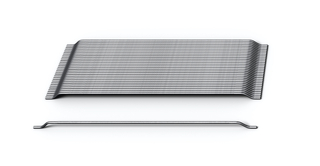 Bekaert steel fibre Dramix 3D 80/60BGP
Bekaert steel fibre Dramix 3D 80/60BGP
Credit/Quelle: Bekaert
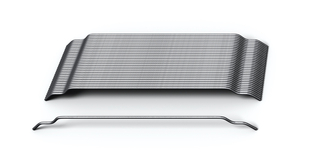 Bekaert steel fibre Dramix 4D 80/60BGP
Bekaert steel fibre Dramix 4D 80/60BGP
Credit/Quelle: Bekaert
The Petrovice plant in the Czech Republic was awarded the contract to produce the steel fibres for this project. After all the tests carried out in advance, the final choice was made to use a Dramix 3D 80/60 BGP fibre.
First of all, the emphasis is on the tensile strength of the fibre. Dramix 3D fibres generally have values ranging between 1100 and 1300 N/mm2. To improve the Fr3 values of the performance levels to be achieved, a higher strength of 1800 N/mm2 is selected. The tensile strength of a steel fibre should increase with the strength of its anchorage (hook shape, concrete matrix). This is the only way the fibre can resist the forces exerted on it. A high L/D ratio (length/diameter), in this case 80, is also a determining factor for the choice made.
The fibres are long, 60 mm, which allows the aggregates to be perfectly integrated (maximum diameter 20 mm) and they are relatively fine (fibre diameter 0.75 mm), creating a net of 11.6 km of fibres/m3 of concrete.
With 4584 fibre units/kg, the concrete will be guaranteed to have fibres throughout the matrix and especially in the traditionally weak points of the segment such as corners and edges.
Finally, the fact that the fibres are glued was also an important element of choice in order to avoid the formation of balls in the industrial production phase. These balls pose the risk of pebble nests and segregations as well as differences in the fibre ratios in the segment, which are detrimental to the homogeneity of the matrix and therefore to the intrinsic strength of the whole. The fibres of competitors (all loose fibre wih a higher diameter), did not satisfy Eiffage Génie Civil and Bonna Sabla.
Even though the technical data sheet for this product meets the requirements of the specifications, quality control is a priority throughout the manufacturing process.
Technical input is needed for the design and calculations, especially when reinforced concrete was originally considered. The same support is to be provided for validation tests, suitability studies or inspection plans.
Regarding the SFRC composite, the aim is not to take the place of the concrete experts, but to inform them about the intrinsic qualities of the proposed fibre to enable an optimal combination and to advocate for the fibre to be tested in the concrete matrix.
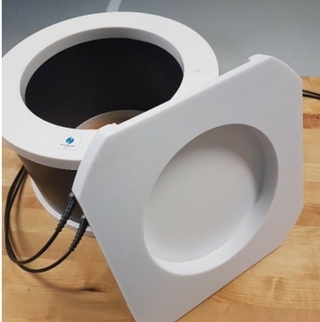 The “Smart C Device” offers a non-destructive inductive method for fiber counting and determining the orientation
The “Smart C Device” offers a non-destructive inductive method for fiber counting and determining the orientation
Credit/Quelle: Bekaert
6 Outlook
The use of steel fiber reinforced segments in the Grand Paris Express metro project, line 16-1, has broken a barrier regarding the use of SFRC. The SFRC approach will open up new perspectives in civil engineering and building construction, favored by an increased use of prefabrication, ahead of the developments that 3D printing will undoubtedly bring about.
The following factors will contribute to the further development and prevalence of the SFRC method:
The use of prefabrication processes, which predate the developments of 3D printing.
Fully automated and robotized prefabrication workshops
Non-destructive inductive method for fiber counting and alignment
Developments in the field of tomography and X-rays
Continued research into the sustainability and low CO2 emissions of this technology (work on the fiber and concrete matrix associated with advances in cement).
Reflection on what we really want to consider as optimization in the context of research to improve sustainability and low carbon operation (does a reduction in segment thickness or fiber dosage really make sense?)

